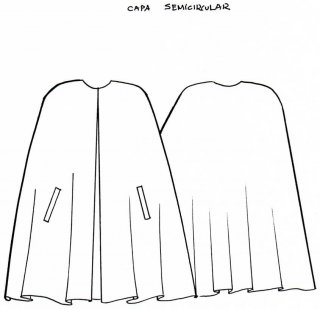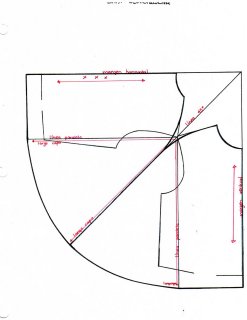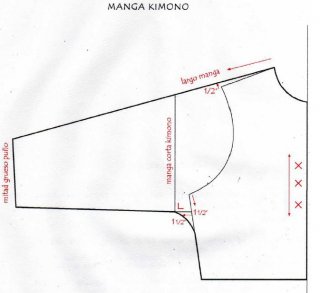gius
Active Member
- Joined
- Jan 8, 2006
- Messages
- 10,854
- Reaction score
- 12
not sure if anyone answered my question..  muxu are you saying basically that to study pattern cutting more in depth means to be able to create patterns that fit better? what i have been taught, if you do all the measurements correctly you will always get the perfect fit (or at least one with minor adjustments). i have never had a problem with the patterns i've been taught, they always fit
muxu are you saying basically that to study pattern cutting more in depth means to be able to create patterns that fit better? what i have been taught, if you do all the measurements correctly you will always get the perfect fit (or at least one with minor adjustments). i have never had a problem with the patterns i've been taught, they always fit  (i've just been fitting mannequins though.)
(i've just been fitting mannequins though.)
i just mean if you look at many of the designers' collections, most of it is based on the "basic patterns". you just alter them, play around with them, the techniques are all there in the basics...
so maybe to do it in depth it just means to do some experimenting of your own i'm asking because i've finished a basic drafting course but there is advanced drafting, but i was told we learn all the basics so we should be able to draft anything after doing the basic course. i don't know what else there would be in the 'advanced' section --i heard actually it is just a continuation and maybe it is just a practice session really... The only thing i haven't figured out yet, is kimono sleeve and cape,
i'm asking because i've finished a basic drafting course but there is advanced drafting, but i was told we learn all the basics so we should be able to draft anything after doing the basic course. i don't know what else there would be in the 'advanced' section --i heard actually it is just a continuation and maybe it is just a practice session really... The only thing i haven't figured out yet, is kimono sleeve and cape,
from the basic patterns i know now. Still thinking though...
going a bit off-topic but one thing i have learned from one day being around pattern makers and another day being around seamstresses, it's that a pattern maker will know how to create effects with patterns, fabrics.. but a seamstress/tailor is super mandatory and will know for example trims and bindings that can enhance a design or invisible details that will hold that shape or pleat of a garment.. Really if i hadn't learnt how to sew, i wouldn't know what to do with all the patterns i've been taught this year and there are new design ideas that come to me only because i am learning how to sew.
and there are new design ideas that come to me only because i am learning how to sew.
 muxu are you saying basically that to study pattern cutting more in depth means to be able to create patterns that fit better? what i have been taught, if you do all the measurements correctly you will always get the perfect fit (or at least one with minor adjustments). i have never had a problem with the patterns i've been taught, they always fit
muxu are you saying basically that to study pattern cutting more in depth means to be able to create patterns that fit better? what i have been taught, if you do all the measurements correctly you will always get the perfect fit (or at least one with minor adjustments). i have never had a problem with the patterns i've been taught, they always fit  (i've just been fitting mannequins though.)
(i've just been fitting mannequins though.)i just mean if you look at many of the designers' collections, most of it is based on the "basic patterns". you just alter them, play around with them, the techniques are all there in the basics...
so maybe to do it in depth it just means to do some experimenting of your own
 i'm asking because i've finished a basic drafting course but there is advanced drafting, but i was told we learn all the basics so we should be able to draft anything after doing the basic course. i don't know what else there would be in the 'advanced' section --i heard actually it is just a continuation and maybe it is just a practice session really... The only thing i haven't figured out yet, is kimono sleeve and cape,
i'm asking because i've finished a basic drafting course but there is advanced drafting, but i was told we learn all the basics so we should be able to draft anything after doing the basic course. i don't know what else there would be in the 'advanced' section --i heard actually it is just a continuation and maybe it is just a practice session really... The only thing i haven't figured out yet, is kimono sleeve and cape,from the basic patterns i know now. Still thinking though...
going a bit off-topic but one thing i have learned from one day being around pattern makers and another day being around seamstresses, it's that a pattern maker will know how to create effects with patterns, fabrics.. but a seamstress/tailor is super mandatory and will know for example trims and bindings that can enhance a design or invisible details that will hold that shape or pleat of a garment.. Really if i hadn't learnt how to sew, i wouldn't know what to do with all the patterns i've been taught this year
 and there are new design ideas that come to me only because i am learning how to sew.
and there are new design ideas that come to me only because i am learning how to sew.



 and that became the first lesson that week
and that became the first lesson that week which by the way, is excellent to begin with and I owe a lot of my basics to.
which by the way, is excellent to begin with and I owe a lot of my basics to.
 Can fashion and math co-exist? But... But... I suck at math
Can fashion and math co-exist? But... But... I suck at math